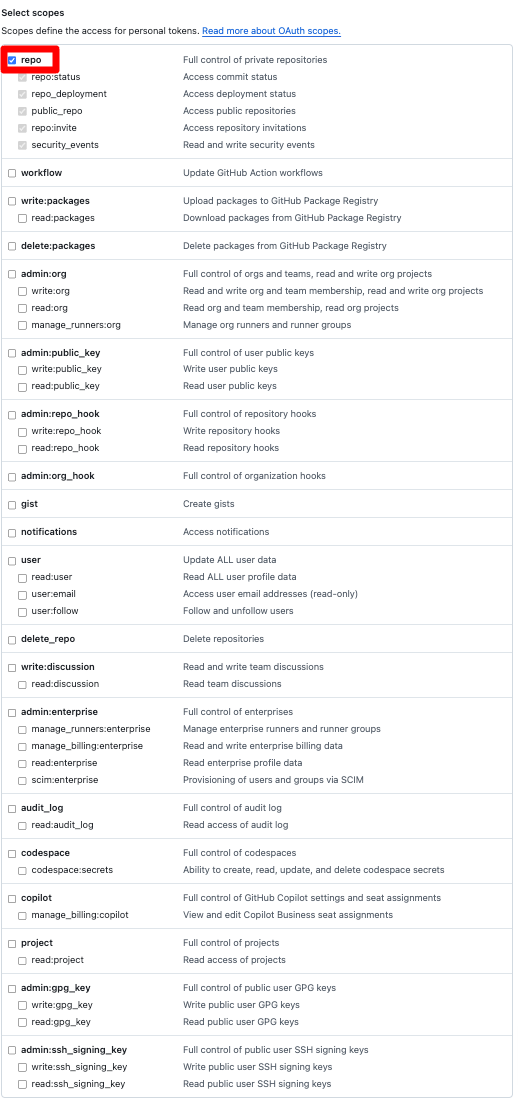no-more-git-oops frees developers from human errors in Git operations by leveraging well-inspected GitHub rulesets.
no-more-git-oops is integrated with PLOP, a "micro-generator framework," and provides three main functionalities:
- (out-of-the-box) Built-In PLOP to set up well-inspected GitHub rulesets
- Register a
no-more-git-oopsgenerator in your PLOP - Customize GitHub rulesets and register them in your PLOP
$ npm install -g no-more-git-oopsIf you are not familiar with PLOP, a quick read of the overview and custom action sections will help you understand the rest of the story.
The Built-In PLOP sets up GitHub rulesets via interactive prompts.
$ nmgoops
? [PLOP] Please choose a generator. (Use arrow keys)
❯ github-rulesets-basic - set up GitHub branch rulesets
github-rulesets-advanced - set up GitHub branch and tag rulesets
no-more-gthub-rulesetes provide two pattern of GitHub rulesests. These rulesets will are the following rules (bold indicates customizable options via interactive prompts):
Basic rulesets:
- Pushing to the protected branches require Pull Request (direct push are not allowed).
- The Pull Request must have at least two review approvals from someone other than the person who pushed the head branch.
- The approval must come from someone defined in CODEOWNERS.
- If the head branch is updated after approval, the previous approval will be reset (re-review is required).
- All discussions in the Pull Request must be resolved.
- The required status checks must pass.
- Only allowed Organization Roles can merge the Pull Request.
- Deleting or force-pushing to the protected branches is prohibited.
- Pull Request merges must enforce a linear history (Squash or Rebase).
Advanced rulesets:
- Same as the basic rules.
- CRUD operations on Git tags are only allowed via GitHub Apps (for integration with release-please flow).
See my blog post for details. (Japanese only)
If you want a faster setup, consider bypassing prompts in PLOP to provide answers directly.
$ nmgoops github-rulesets-basic -- \
--repository <ower>/<repository> \
--gitHubApiUrl "https://api.github.com" \
--bearerToken <youru-token> \
--requiredApprovingReviewCount 2 \
--branchesCommaSeparated 'main,release/**' \
--statusCheckCommaSeparated ci \
--bypassRoles 0 --bypassRoles 1You can register no-more-git-oops in your PLOP.
// plopfile.mjs
import {setGitHubRulesetsGeneratorToPlop} from 'no-more-git-oops';
export default async function (plop) {
// your generator
plop.setGenerator('next-controller', {
description: 'application controller logic',
prompts: [{
type: 'input',
name: 'name',
message: 'controller name please'
}],
actions: [{
type: 'add',
path: 'src/{{name}}.js',
templateFile: 'plop-templates/controller.hbs'
}]
});
// register no-more-git-oops generator
await setGitHubRulesetsGeneratorToPlop(
// generator name of basic rulesets
"basic-github-rulesets",
// generator name of advanced rulesets
"advaced-github-rulesets",
plop
);
};Then, execute your PLOP using the following command:
? [PLOP] Please choose a generator. (Use arrow keys)
❯ next-controller - application controller logic
basic-github-rulesets - setup GitHub branch rulesets
advaced-github-rulesets - setup GitHub branch and tag rulesetsno-more-git-oops also allows you to fully customize GitHub rulesets to meet your specific requirements using the setActionType API of PLOP.
// plopfile.mjs
import {setGitHubRulesetActionToPlop} from 'no-more-git-oops';
export default function (plop) {
// set no-more-git-oops actions setActonType
setGitHubRulesetActionToPlop('github-rulesets', plop);
plop.setGenerator('my-github-rulesets', {
prompts: [
{
type: 'input',
name: 'repository',
},
{
type: 'password',
name: 'bearerToken',
mask: true,
}
],
actions: [
{
type: 'github-rulesets',
requestParamsTemleateDirs: [
'github-rulesets-templates',
],
bearerToken: '{{bearerToken}}',
repository: '{{repository}}',
targetBranches: ['main'],
}
]
});
};The github-rulesets-templates folder will have the following structure:
./github-rulesets-templates/
├── all-users-rules.json.hbs
└── branch-exclude-core-contributors-rules.json.hbs
no-more-git-oops traverse json.hbs under specified template directories, then separately set rulesets one by one.
Please implement based on well-inspected rulesets as a reference.
We recommend using classic personal access tokens (PAT) for their simplicity. The PAT requires the following permissions:

